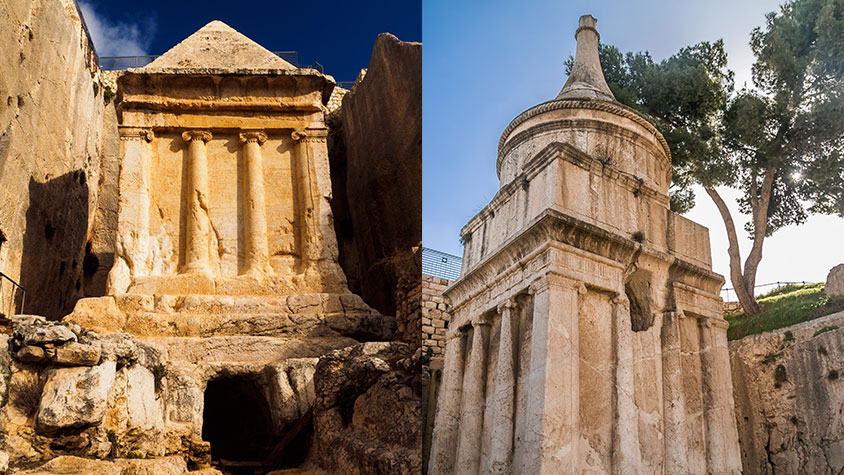Near the Old City of Jerusalem, in the foothills of the Mount of Olives, is the 20-mile long Kidron Valley.
Also known as the biblical King’s Valley—derived from its location just east of the palace in the City of David— the Kidron Valley is mentioned multiple times throughout scripture, and has seen plenty of foot traffic for centuries, given its ideal proximity to strategic sites in Jerusalem. Visitors can traipse the white stone path into the heart of the valley to view not only scores of olive trees but also the curious 2,000-year-old monuments carved into the rock face. The monuments have equally curious names, largely named after notable biblical figures, including Absalom’s Tomb, or Absalom’s Pillar, and the Tomb of Zechariah.
Absalom’s Tomb
Who is buried in Absalom’s Tomb? Named for the reference found in 2 Samuel 18:18, where Absalom, the rebellious son of King David, had “taken a pillar and erected it in the King’s Valley as a monument to himself” because he was without a son to carry on his name, this ancient monument is just a stone’s throw from the Tomb of Zechariah and is easily recognized by its distinctive conical shaped roof and finial. Popular Jewish tradition maintains this is the actual pillar of Absalom, the rebellious son of David, but it is more likely the tomb of a wealthy Jerusalemite, dated to the 1st century AD.
The Tomb of Zechariah
The name suggests, as many others do, that a biblical figure is buried here … but it isn’t the well-known prophet. Rather, it marks the tomb of another Zechariah, a high priest of the First Temple Period. He is mentioned in 2 Chronicles 24:20 for speaking out against the wickedness of the Judean king Joash. Zechariah was later stoned to death by Joash’s followers.
Visitors to the tomb will find there is no grave inside. Instead, they are actually viewing a cenotaph—a tomb or monument which commemorates an individual who is buried elsewhere. Adorned with Ionic-style pillars and an Egyptian pyramid as the cornice, the tomb is a popular stopping point for those passing through the valley.
Originally posted at israeladvantagetours.com


